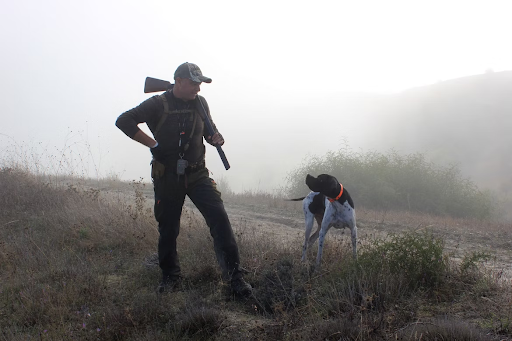
Hunting has long stood the test of time as a crucial part of our human history, providing entire civilizations with food, clothing, and tools for survival. Even with all the advancements of modern life, people still engage in various forms of hunting practices around the globe. Some of these practices have changed over time to align with conservation efforts and ethical considerations, while others still raise concerns about their impact on ecosystems and animal welfare.
In this blog post, we will explore seven hunting practices that are still prevalent today. We’ll discuss their historical origins, how they have adapted to the modern world, and the ethical debates surrounding them.
Trophy Hunting
Trophy hunting involves targeting specific animals for their impressive characteristics, such as large antlers, impressive horns, or striking pelts. While aristocrats historically undertook trophy hunting as a display of wealth and prowess, it has recently evolved into a recreational activity for many. Proponents argue that trophy hunting contributes to conservation efforts by funding habitat preservation and wildlife management. They believe that the high fees paid by hunters contribute significantly to local economies, supporting conservation initiatives. Additionally, proponents suggest that trophy hunting can target specific individuals that might be detrimental to the overall health of a population, thus aiding in natural selection.
However, opponents of trophy hunting criticize the practice for its potential negative impact on populations, particularly when not managed sustainably. Concerns arise when hunting quotas are not enforced effectively, leading to overharvesting and disrupting delicate ecosystems. Moreover, ethical considerations are heightened due to focusing on killing for personal gratification rather than sustenance. The practice has also faced backlash due to its perceived glorification of the act of killing animals for sport. Striking a balance between conservation, economic interests, and ethical considerations remains a challenge in this contentious practice.
Traditional Subsistence Hunting

Traditional subsistence hunting is still practiced all over the world. Many people rely on hunting for their survival as well as cultural preservation. Indigenous communities focused on hunting traditions have deep-rooted knowledge about their local ecosystems and practice sustainable hunting methods. The harmony between humans and nature that characterizes tier practices is often lauded as an example of balanced coexistence. These hunters utilize animals for food, clothing, and tools, ensuring minimal waste and ecological impact.
However, external factors such as habitat loss and modernization often threaten their way of life. As indigenous lands are encroached upon by industrial development and deforestation, the delicate balance that sustains their subsistence hunting practices is disrupted. Balancing the rights of indigenous peoples to continue their traditions with the need for conservation and animal welfare poses a complex challenge for policymakers and conservations.
Fox Hunting
Fox hunting is a controversial practice that dates back centuries, rooted in European aristocracy since at least the 15th century and involving hounds and riders on horseback pursuing a fox. While traditional fox hunting has been banned or restricted in many countries due to animal welfare concerns, variations of the practice, such as drag hunting, have emerged. Drag hunting involves following an artificially laid scent trail instead of a live fox, thereby reducing harm to wildlife. The ethical debate surrounding fox hunting continues to divide opinions, highlighting the tension between cultural practices and animal welfare considerations.
The controversy surrounding fox hunting stems from the perceived cruelty inflicted upon the pursued animals. Critics argue that the stress and fear experienced by the foxes during the hunt can be inhumane, regardless of the eventual outcome. The practice also raises questions about the ethics of using animals for entertainment and sport. Supporters of fox hunting emphasize its cultural significance and the sense of community it fosters. The conflict between preserving tradition and safeguarding animal welfare necessitates ongoing discussions and potential policy adjustments.
Canned Hunting
Canned hunting is a practice that has garnered significant criticism for its lack of fairness and ethical concerns. It involves hunting animals confined within a controlled area, leaving them little chance to escape. This practice is often associated with exotic animals such as lions and tigers. Canned hunting raises severe questions about animal welfare and the ethics of killing animals in controlled environments for sport. Many animal rights advocates and conservationists are working to raise awareness and push for bans on canned hunting.
Critics argue that canned hunting undermines the principles of fair chase and sportsmanship integral to ethical hunting. The practice reduces animals to commodities, bred and raised solely to be killed by hunters—this commodification of life clashes with conservation and biodiversity values. Moreover, the practice has implications for the species’ genetic diversity, as captive breeding may inadvertently lead to a decrease in overall genetic health. The ethical and conservation concerns surrounding canned hunting have increased calls for abolition.
Bow Hunting
Hunting with a crossbow or bow is an ancient technique that has survived through the ages, blending tradition with modern equipment advancements. Advocates argue that bow hunting requires more remarkable skill and precision compared to firearms, and it can provide a more intimate connection with nature. The practice requires hunters to be near their prey, demanding heightened awareness and understanding of animal behavior.
However, critics voice concerns about the potential for animals to suffer from non-fatal wounds and the challenges of tracking wounded animals over long distances. Bow hunting requires meticulous training and proficiency to ensure a quick and humane kill. Proper training, ethical considerations, and adherence to regulations are crucial parts of proper bowhunting practices.
Traditional Whaling
Traditional whaling practices have been deeply rooted in the cultures of indigenous communities, particularly in regions like the Arctic and some Pacific islands. These practices have provided essential resources for these communities for generations. However, global concerns about the conservation of whale species and the methods used in modern whaling have led to widespread criticism.
The historical context of traditional whaling is often overshadowed by the commercial whaling practices that decimated whale populations. Modern whaling methods, including large-scale commercial operations, have led to the endangerment of several whale species. Balancing cultural heritage with the need to protect endangered species presents a complex dilemma that requires international cooperation and sensitive solutions. Some communities have transitioned to non-lethal whale-watching activities as an alternative, contributing to conservation efforts while preserving their cultural practices.
Bushmeat Hunting
Bushmeat hunting refers to hunting wildlife for consumption, primarily in tropical and subtropical regions. While bushmeat hunting has been part of local diets for centuries, increased demand, population growth, and improved transportation have led to unsustainable hunting practices. Overhunting significantly threatens biodiversity, disrupting ecosystems and endangering numerous species.
The consumption of bushmeat is deeply intertwined with cultural traditions and food security in many regions. However, the unsustainable nature of contemporary bushmeat hunting has severe consequences for both local communities and the environment. Deforestation, habitat degradation, and the spread of zoonotic diseases are among the chief concerns associated with this practice. Addressing bushmeat hunting requires a multi-faceted approach considering food security, poverty alleviation, and conservation efforts. Collaborative efforts between governments, NGOs, and local communities are essential for finding sustainable solutions.
Conclusion
The continued practice of various hunting methods today reflects the intricate interplay between tradition, culture, ethics, and conservation. As our world evolves, so too must our understanding of these practices and their implications. Striking a balance between preserving cultural heritage, animal welfare, and ecosystem health remains an ongoing challenge. By engaging in informed conversations and advocating for responsible hunting practices, we can navigate this complex terrain and work towards more sustainable practices.






